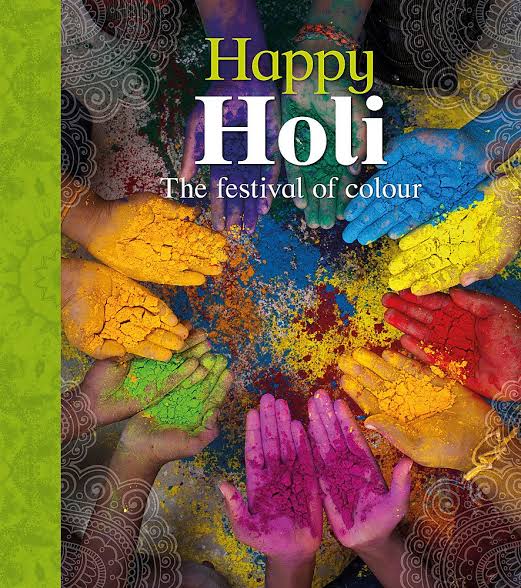
Holi is one of the major festivals of India and is the most vibrant of all. The joys of Holi knows no bound. The festival is celebrated across the four corners of India or rather across the globe. The festival is filled with so much fun and frolic that the very mention of the word ‘Holi’ draws smile and enthusiasm amongst the people. Holi also celebrates the arrival of Spring, a season of joy and hope.
Legend of Holi Festival
Holi is one of the oldest festivals of India. There are many interesting stories associated with the festival’s origin as one moves across the different states from North to South and East to West. Paintings and scriptures depict the roots of the festival. Mythology plays a very important part in narrating the festival of Holi. The most popular stories of Holi origin relates to ‘Holika Dahan’ and Legend of Radha-Krishan.
Story of Holika
Integrally entwined with Holi, is the tradition of ‘Holika Dahan’, which is actually lighting of bonfires. The ritual is symbolic of victory of good over evil and has its root in the legend of demon king Hiranyakashyap who wished to end his blessed son, Prahlad’s life with the help of his sister, Holika who burnt in the fir and no harm occurred to Prahlad. Since then the day is celebrated in victory of good over bad.
Story of Radha and Krishan
The legend of Radha and Krishna is closely linked with this tradition of colors on Holi. Young Krishna, who had a dark complexion was jealous of his beloved Radha’s extremely fair skin. In a mischievous mood, he applied color on Radha’s face. Following this ancient legend, lovers till date long to color their beloved as an expression of love.
Holi Celebrations in India
Holi is famous as Basant Utsav in rural India. It is one of the major festivals in India and is celebrated with extreme enthusiasm and joy. Gulal, abeer and pichkaris are synonymous with the festival. Elaborate plans are made to color the loved ones. Everybody wants to be the first one to color the other. In the ensuing battle of colors, everybody is drowned not just in colors of gulal but also in love and mirth. People love to drench others and themselves in colored water. Gujiyas and other sweets are offered to everyone who comes across to color.
Temples are beautifully decorated at the time of Holi. Idol of Radha is placed on swings and devotees turn the swings singing devotional Holi songs. Now-a-days small plays are organized reflecting the spirit of the festival.
What is remarkably same across the country is the spirit of Holi. Fun, frolic, boisterousness to the extent of buffoonery marks this festival of colors. What more can be expected- when the people get a social sanction to get intoxicated on the bhang, open not just their hearts’ out but also their lungs. And viola, nobody is expected to take offense too, as the norm of the day is, ‘Bura na mano Holi hai’.
Holi in Maharashtra
People of Maharashtra have their own grand style of celebrating Holi. Besides other things, not to be missed is their mouthwatering delicacy- Puranpoli.
Holi is called Shimga or Rangpanchami
People of Maharashtra commonly know this festival of colours by the name of Shimga or Rangpanchami. For, the play of colours is reserved for the fifth day here.
The festival is particularly popular amongst the fisher folk. They celebrate it in on a large scale and revel in the festivities by singing, dancing and merry-making. This special dance provide them means to release all their repressed feelings, needs and desires. People also utter sound through their mouths in a peculiar fashion by striking their mouths with the back of their hands.
Holi differs from North India in Maharashtra
People of Maharashtra celebrate Holi like the North Indians. Play with colours is reserved for Rangpanchami, which comes five days after Phalgun Poornima. On this day, they make bonfire and effigy of Ogress Holika is burnt symbolizing the victory of good over evil.
The state also gets its unique Holi flavour with the delicacies such as Puran Poli. Besides people drink sugarcane juice and feed children with watermelons that are in season.
Historic significance of Holi in Maharashtra
During the Maratha regime this festival was celebrated with great pomp and grandeur. It was on a Holi festival day that five-year-old Jijabhai, daughter of Lakhooji Jadhav innocently splashed coloured water and threw gulal on young Shahaji, son of Malajirao Bhowale. Taking it as an auspicious event, the two children’s engagement was announced that very day. Soon they were married. Later, Jijabhai gave birth to Shivaji, the founder of great Maratha empire.
Holi in Goa
The energetic people of Goa do not lag behind the rest of the country when it comes to Holi celebrations. The festival of spring is called Shigmo in Goa. The festival is celebrated mostly by the masses following all religious traditions. As expected from the Goans, the festival is accompanied with fanfare. Performance on drumbeats and epic enactment of mythology are religiously followed. Vivid and vibrant colours of gulal and neel are abundantly used. Shigmotav is highlighted with performances of troupes in the form of parades and cultural dramas. At dusk, huge effigies are taken in processions and prizes given away.
The Panaji Shigmotsav Samiti also organizes a parade in Panaji. Besides, numerous temple around Goa also make special arrangements for Holi celebrations. Of interest is the celebrations at Panaji, Mapusa, Vasco Da Gama and Margao.
Spread Happiness, Stay Blessed!
HAPPY HOLI EVERYONE!












































